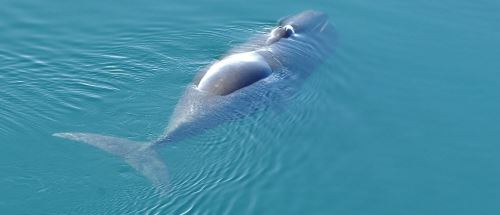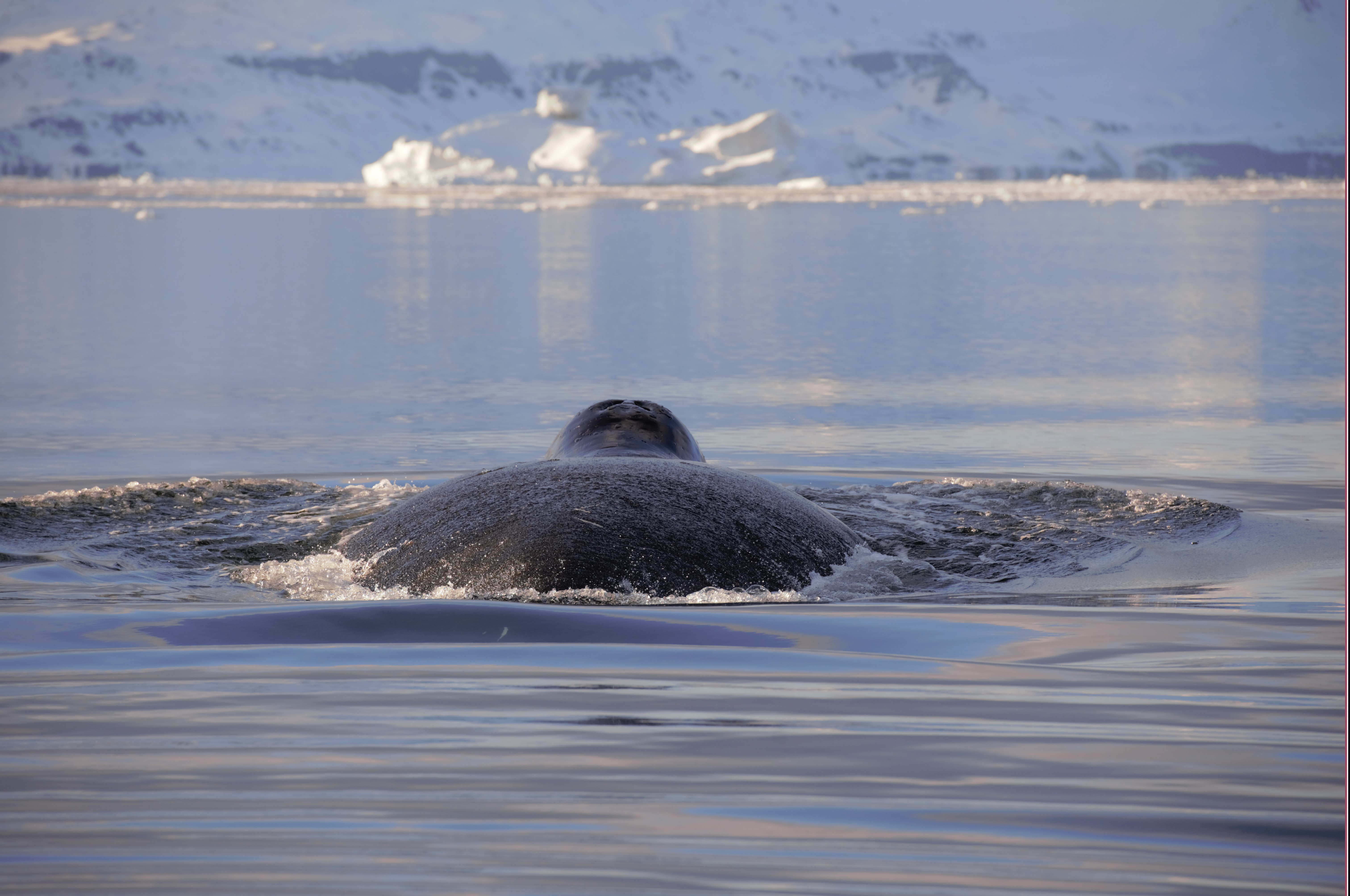← Back
Bowhead whales, auxiliary oceanographers

Bowhead whales are crossing iced regions in spring. They dive along their path and the environmental parameters are recorded and transmitted if they are equipped with Argos satellite telemetry tags. Two different tags have been tested and their records analyzed for both oceanographic and ecological studies.
In situ oceanographic data collection over larger spatial scales are difficult and time consuming to conduct at best, and even more so in iced regions. However, at the same time, those regions are the most affected by climate change, and the oceanography would benefit from a closer monitoring of the water column.
On the other side, a number of marine mammal studies are done in the polar regions using satellite telemetry Conductivity-Temperature-Depth (CTD) tags. Marine mammals such as elephant seals in the Southern Ocean are the best-known examples. They can provide temperature-salinity depth profiles at high spatial resolution (since they are diving and surfacing frequently compared to automated systems like Argo floats).
Whales can also be equipped, even if this is challenging due to their short time at the surface (usually a few seconds, at most). Batteries life is also a limitation. The Argos system allows collection of low-power transmissions with concatenated data from oceanographic tags. Working in polar regions offer the advantage of more satellite-fixes than when operating closer to the Equator.
More info about marine animals tracking
![Satellite images showing the sea ice cover in the area of the study and the bowhead whale tracks, month by month from May to August, with the two type of tags attached to the same whale. (Credit [Teilmann et al. 2020])](https://www.argos-system.org/wp-content/uploads/2022/02/large-cetaceans-bowhead-whales-20.jpg)
Satellite images showing the sea ice cover in the area of the study and the bowhead whale tracks, month by month from May to August, with the two type of tags attached to the same whale. (Credit [Teilmann et al. 2020])
![An example of Salinity (top) and Temperature (bottom) profile of a bowhead whale along its track. (Credit [Teilmann et al. 2020])](https://www.argos-system.org/wp-content/uploads/2022/02/large-cetaceans-bowhead-whales-24-wc.png)
An example of Salinity (top) and Temperature (bottom) profile of a bowhead whale along its track. (Credit [Teilmann et al. 2020])
References & links
- Teilmann, J., Agersted, M.D., Heide-Jørgensen, M.P., A comparison of CTD satellite-linked tags for large cetaceans – bowhead whales as real-time autonomous sampling platforms Deep-Sea Research Part I, https://doi.org/10.1016/j.dsr.2020.103213.
- https://www.facebook.com/Aarhus-University-Section-for-Marine-Mammal-Research-1481125835511699/
Photo: A bowhead whale (cropped from Kit Kovacs/Norwegian Polar Institute)

